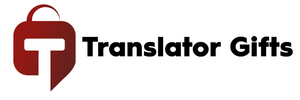Safe Shopping in a Digital World: Your Checklist to Spot Trusted Websites
The internet has become a vast marketplace, offering an incredible variety of products at your fingertips. But with this convenience comes a responsibility: ensuring you're shopping on a legitimate website. Unfortunately, bad actors lurk online, waiting to exploit unsuspecting consumers.
Here at Translator Gifts (translatorgifts.com), we understand the importance of online safety. We want you to feel confident and secure when making gift purchases on our trusted platform. But even beyond our store, this guide equips you with the knowledge to navigate the digital landscape confidently.
This blog post will serve as your ultimate checklist for spotting trusted websites, protecting yourself from online scams, and ensuring a worry-free shopping experience.
The Problem: A Web of Uncertainty
Imagine this scenario: you're searching for the perfect gift online. You find a website with an amazing deal on that coveted item. The price seems too good to be true, but the website looks professional. Should you take the risk?
This is the dilemma many online shoppers face. Deceptive websites often mimic legitimate ones, making it difficult to distinguish between real and fake. Falling prey to these scams can result in financial loss, stolen personal information, or even malware infecting your device.
Your Shield: A 5-Point Checklist for Trusted Websites
Don't let the fear of online scams deter you from enjoying the convenience of online shopping! Equip yourself with the following checklist to identify trustworthy websites:
1. Scrutinize the URL:
- Look for HTTPS: A secure website will have "HTTPS" at the beginning of its URL, not just "HTTP." The "S" stands for "Secure" and indicates the website encrypts data transmission, protecting your information.
- Beware of Typos: Phishing websites often mimic legitimate ones by using slightly altered spellings in the URL. Double-check the website address before entering any personal details.
2. Investigate the "About Us" and "Contact Us" Pages:
- Transparency is key: Legitimate websites will have a dedicated "About Us" page outlining their company history, mission, and contact information.
- Contact Verification: Look for a phone number and physical address, not just an email address. This allows for verification and builds trust.
3. Inspect the Website Design and Content:
- Professionalism Matters: A well-designed website with clear navigation, high-quality images, and grammatically correct content indicates a legitimate business.
- Beware of Stock Photos: Websites relying solely on generic stock photos might be a red flag.
4. Read Online Reviews:
- Seek Independent Opinions: Before making a purchase, research the website through independent review platforms like Trustpilot or the Better Business Bureau. Real customer experiences can be invaluable.
5. The Power of Payment Security:
- Look for Secure Payment Gateways: Reputable websites utilize secure payment gateways like PayPal or Stripe that encrypt your financial information during transactions.
- Avoid Cash on Delivery (COD) or Unfamiliar Payment Options: Legitimate websites generally offer secure and well-known payment methods.
Always Be Wary: A Disclaimer
This checklist provides a valuable framework for identifying trusted websites in today's online landscape. However, it's crucial to understand that the digital world is constantly evolving, and deceptive tactics may change.
Here are some additional points to remember:
- If it seems too good to be true, it probably is. Extraordinarily low prices can be a telltale sign of a scam.
- Beware of unsolicited emails or pop-up ads promising deals.
- Never share your personal or financial information on a website you don't trust.
- Use a strong, unique password for each online account.
- Consider using a credit card for online purchases as they often offer better fraud protection than debit cards.
By staying vigilant and applying these tips, you can navigate the online marketplace with confidence.
Happy and Secure Shopping!

